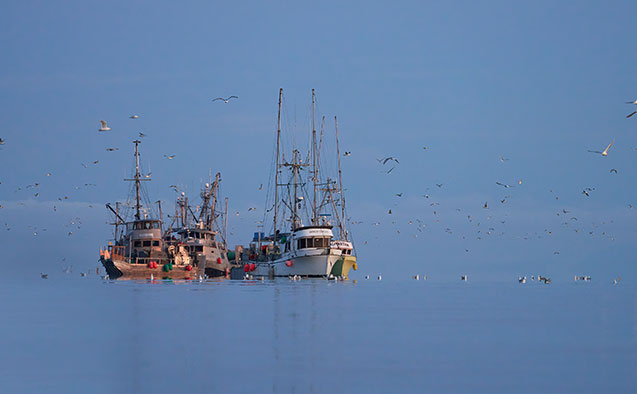Fish, the U.S. Supreme Court and the balance of power in the federal government
Expert on environmental policy Stan Meiburg explains the Loper case

By the end of the month, the U.S. Supreme Court must decide Loper Bright Enterprises vs. Raimondo, a case about commercial fishing and whether the federal government can compel the owners of commercial herring fishing vessels to pay for expert observers on their vessels.

The case is about much more than fish, says Stan Meiburg, executive director of Wake Forest University’s Sabin Center for Environment and Sustainability and an expert on environmental regulation. “It is about whether or not the Court should overturn a landmark 1984 case, Chevron v. Natural Resources Defense Council, and in so doing reshape the balance of power in the federal government.”
Meiburg, who served 39 years at EPA, including as acting deputy administrator, can explain “Chevron deference,” why it matters and the likely effects if the Court shifts away from it.
What did the decision in Chevron v. Natural Resources Defense Council do?
The Chevron case concerned a regulation under the Clean Air Act. In 1981, EPA changed the definition of a “major source” of air pollution. “Major source” is defined in the Clean Air Act, but its precise meaning can be interpreted differently. At complex industrial plants, the term “source” could refer to individual emitting units within the plant (like a boiler) or could be read to encompass emissions units within the entire plant. The latter interpretation, favored by the Reagan Administration and then-EPA Administrator Anne Gorsuch, gave industries more flexibility in obtaining permits required by the Act. The Chevon decision allowed EPA to make this change, and created a two-part test of whether courts should overrule agency regulatory decisions.
- First, courts must determine whether Congress has spoken directly to the precise question at issue.
- Second, if Congress has not, courts should determine whether the agency’s interpretation was reasonable and permissible. If courts believe the agency’s determination was “a reasonable choice within a gap left open by Congress”, they should respect this as a legitimate policy choice. This became known as “Chevron deference.”
The decision in the Chevron case tells courts that, when faced with statutory ambiguity, the courts should not substitute their judgment for choices properly made by responsible agencies.
What would limiting “Chevron deference” do?
Broad limitations on Chevron deference would make the work of executive agencies far more difficult. Even worse, they would make Congress’ work nearly impossible. Much ambiguity in statutes stems from pressures of time and other business, but strategic ambiguity is an essential tool of legislative drafting. It’s essential for two reasons: Congress can push agencies to act on issues Congress knows little about; and Congress can address urgent issues even when it can’t settle all the details in the legislative process. This last point is especially critical in a polarized Congress.
The loss of Chevron deference will leave us with both agencies and a Congress that cannot act. What will increase is the power of the courts. One opponent of Chevron deference described American governance as a train, with Congress as the engineer in charge of steering, the Executive Branch as the engine itself, and the courts as the humble caboose in the rear. The loss of Chevron deference would suggest that the judicial caboose wants to be the engineer.
Meiburg is available for interviews.
Categories: Environment & Sustainability, Experts
Media Contact
Cheryl Walker
media@wfu.edu
336.758.5237



